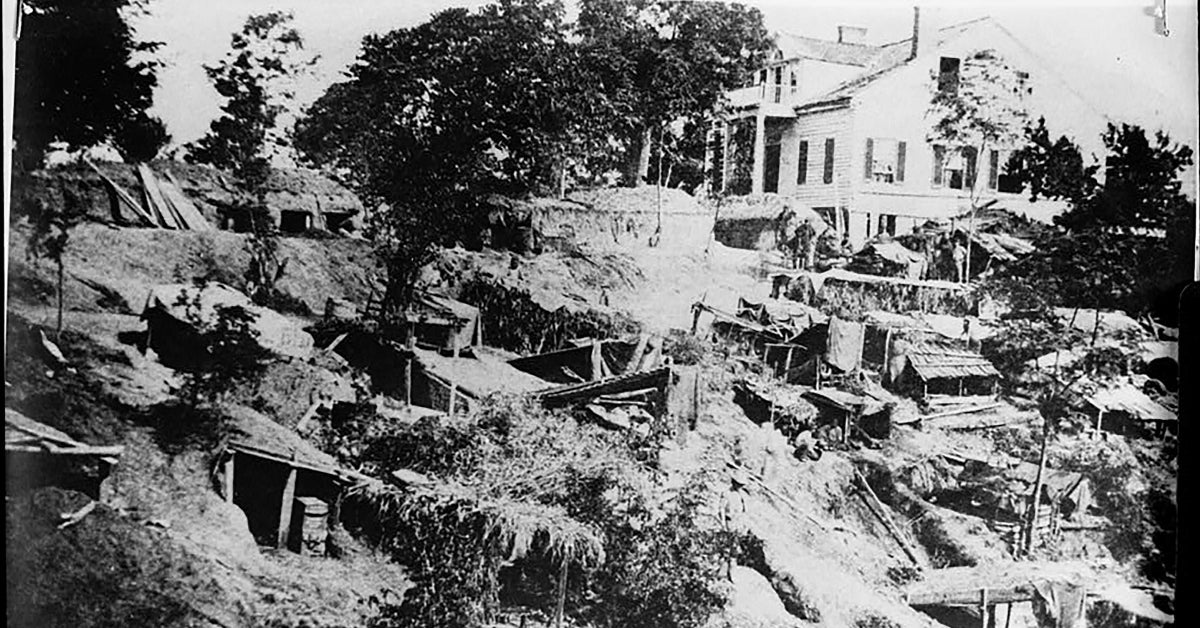SIEGE 160: Caves provided residents shelter from barrage during Siege of Vicksburg
Published 8:00 am Saturday, June 3, 2023

- Caves during the Siege of Vicksburg, 1863. (Library of Congress photo)
When the Union’s cannons opened fire on Vicksburg from Maj. Gen. Ulysses Grant’s fortifications east of town and the shells from the Union Navy’s mortar barges across the Mississippi on the Louisiana side fell on the city, residents dug in.
Historians say it is hard to determine exactly how many caves were dug during the Siege of Vicksburg as residents tried to find some safe haven from the shelling.
According to one account, the numerous caves earned Vicksburg the nickname “Prairie Dog Town” from Union troops when the siege ended on July 4 and they saw the underground dwellings.
Although the siege was the influence for most of the cave construction, residents began building caves in May 1862 when Adm. David Farragut bean shelling Vicksburg from the Mississippi River.
“The caves were not that numerous and were used as shelter from the shells,” said Terry Winschel, a retired Vicksburg National Park historian. “Women and children were ordered to leave the city when the Union Navy arrived but it’s hard to determine how many did.”
One woman who stayed was Mary Loughborough, who described life in Vicksburg under the siege in her memoir, “My Cave Life in Vicksburg.”
She recalled having to flee the home in which she was staying in the middle of the night when shells began getting too close.
“The caves were plainly a necessity, as some person had been killed on the street by fragments of shells,” Loughborough said.
She recalled fleeing the house when she was staying during a night navel shelling came from the river as Grant’s siege began and then seeing the result of the attack the next morning.
“The room I had so lately slept in had been struck during the first night and a large hole made in the ceiling,” she said. “So constantly dropped the shells around the city that the inhabitants all made preparations to live underground during the siege.”
Cave construction became a major business in the city, Loughborough said.
“Caves were the fashion — the rage — over besieged Vicksburg. Negroes who understood their business hired themselves out to dig them from $30 to $50, according to size. Most persons, considering different locations unsafe, would sell them to others who had been less fortunate and less prudent.
“So great was the demand for cave workmen, that a new branch of industry sprang up and became popular — particularly as the personal safety of the workmen was secured and the money withal (in addition).”
The soil around Vicksburg is loess, composed of sand and plant material that rainwater cannot penetrate. The soil is easy to dig and build a cave that could protect the residents from everything but a direct shell hit.
The caves built around the city ranged from simple to elaborate. People would take carpets into the caves and put them down. In one cave known as the “Hough cave,” a bed was carved into the wall and there were notches in the wall for lamps and lanterns.
“Some caves were for individual families and some held multiple families,” Winschel said. “One held more than 200 people. There were multiple entries so in case of a cave-in or a shell hit, people could get out.”
People remained in their caves for most of the day and outings were made when the ships stopped their bombardment. Meals were served at unusual times. Loughborough said it wasn’t unusual for servants to begin preparing a meal only to flee back into the cave when the shells began falling. Meals, she said, could be delayed for hours.
Caves took many shapes. The Hough cave, Winschel said, was a Y-shape. Loughborough’s first cave was T-shaped.
Regardless of the size or shape of the caves, they were usually built facing east.
“Our policy in building had been to face directly away from the river,” Loughborough said. “All caves were prepared, as near as possible in this manner.”
But regardless of the location, people were always facing cannon.
“The city itself and the residents were never the target of the Union guns,” Winschel said. “The target of the shellfire, in the case of the Navy, was the Confederate river batteries.
“Unfortunately for the people, the shells hit residential and commercial areas,” he added. “There was no such thing as direct fire in the Civil War, especially from those mortar boats because they were moored on the far shore. The naval guns were not rifled.”
There are many stories about how the caves disappeared after the siege. Some of the caves collapsed and filled themselves in over the years. Other accounts say the city had them filled after some children were killed in a cave-in.
One local historian said Grant had many of the caves filled because he considered them a health hazard and to keep his soldiers out of trouble.






